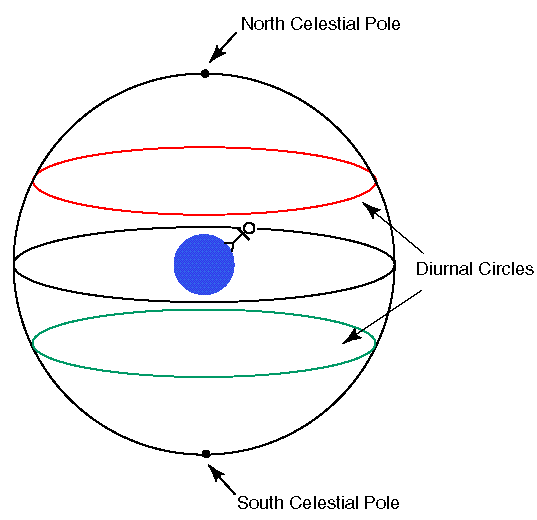Term: culminate, diurnal circle, circumpolar
The celestial sphere is something like the globe. The stars
are like cities with fixed positions on the globe. Everyday
the celestial sphere overhead completes a rotation causing some stars to
rise in the East and obtain higher and higher altitudes. As the
star's azimuth approaches 180° the star crosses the meridian
and the star has its maximum altitude. A star that is crossing
the meridian (thus obtaining its maximum altitude) is said to
culminate. The north celestial pole
never sets at CSB/SJU... it always sits with altitude 45°
on the North half of the meridian. The stars near the pole
also don't set...they just circle the pole once per day.
Stars near the pole that don't set are called circumpolar stars
The path that a star takes over a day is a diurnal circle.
Diurnal circles are parallel to the celestial equator, and
(except for the celestial equator) are small circles.

The red trail is part of the diurnal circle of a star that
is north of the celestial equator. Notice that it rose north of
due east, crossed the meridian (culminated) between the celestial
equator and zenith and is currently in the western sky.
Estimate the altitude and azimuth of the red dot (star).
The green trail is part of the diurnal circle of a star that is
south of th celestial equator. Notice it rose south of due east
and culminated at much lower altitude than the red star. Estimate
the altitude and azimuth of the green dot (star).

This is what the full diurnal circles look like on the
full celestial sphere. They are just like lines of
constant latitude on the Earth.
NEXT


